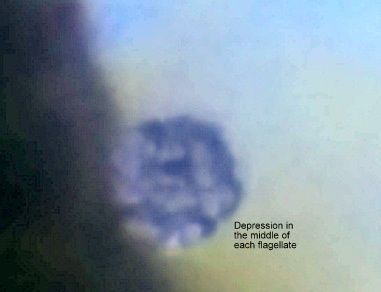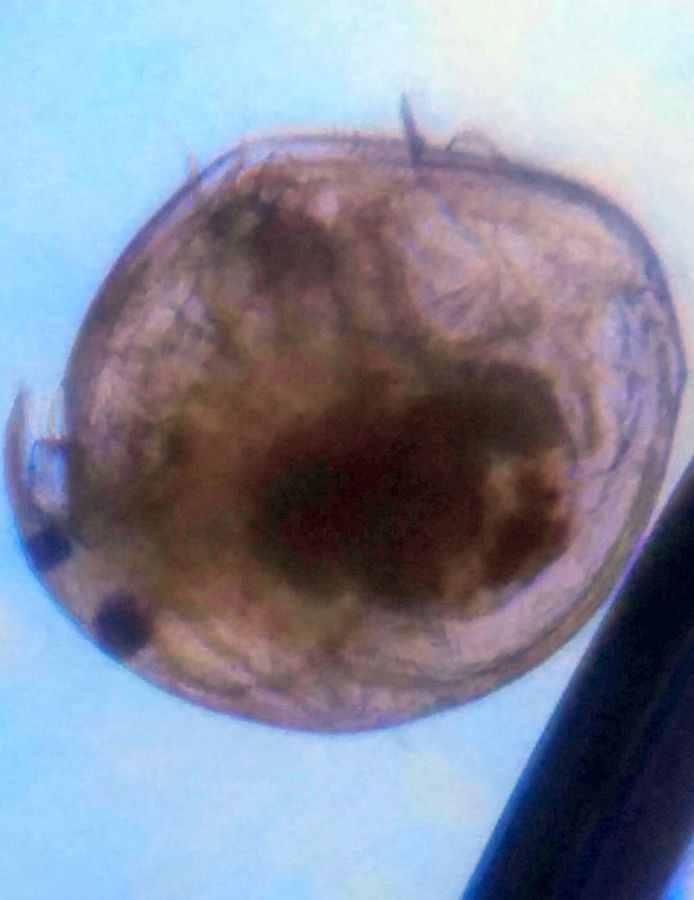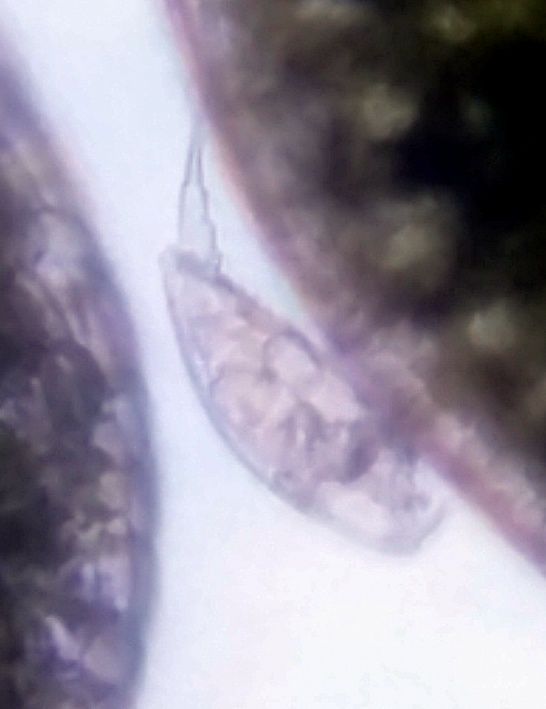Life in a liter of Pond water –Day 6: A mysterious dance, fun and games
 Oct 17, 2015 • 9:20 PM UTC
Oct 17, 2015 • 9:20 PM UTC Unknown Location
Unknown Location 140x Magnification
140x Magnification Microorganisms
Microorganisms
laksiyer
Human observer of life. https://sukshmadarshin.wordpress.com
97posts
1255comments
5locations

Continuing from my previous post … on Day 6 post-collection, the temperature was supposed to hit freezing in the DC area and I frantically picked up my Pond water bottle to see how things were. It was a very busy microcosm as always but perhaps not for long (unless I decide to get the bottle in the house). Below the roots of the duckweed layer (there are at least three distinct species), were several small particles rapidly moving about and I siphoned out a couple of these along with a frond on to my slide.
Since my observations are on one sampling of pond water, and since I want to count as many species as I possibly can, I am using a continuous numbering system for consistency across posts.
6. Daphnia. Arthropod–> Crustacea–> Branchiopoda –> Cladocera –> Daphniidae
Since my observations are on one sampling of pond water, and since I want to count as many species as I possibly can, I am using a continuous numbering system for consistency across posts.
6. Daphnia. Arthropod–> Crustacea–> Branchiopoda –> Cladocera –> Daphniidae

A common presence in pond water I played “Catch me if you can” with this water flea for some time. Of course I lost, but it was a fun game.
His friend though was caught at the meeting point of two bubbles and a frond (Manu something you might have thought about; using bubbles to trap small critters). Anatomical details were visible and there was perhaps also a brood pouch.
7. Metazoa–>Protostomes –>Spiralia–>Platyzoa–> Rotifera

A transparent rotifer. This one was more transparent than the previous rotifer I observed , although it might just be the same species. The rotifer’s feeding mechanism however was very apparent. The mouth leads in to the grinding pharynx or the mastax and is hard at work in this video.
8. Swarming flagellate of unknown provenance displaying synchronous disaggregation.

The hands-down star of the day. Along the edge of the duckweed frond were many groups of identical cells involved in an intimate dance and then to my surprise they burst out like a firecracker in all directions. What might this be? I took it to my local expert (L. Aravind) and he pointed to me that it was a flagellate with two flagellae emerging from a depression, but even he had never seen such a behavior. I knew for one that this is quite an uncommon observation. A few speculations came out from the discussion.
These are freshly divided cells that were released. However, there didnt seem to be any active division or number increase as far as we could see. My favored hypothesis was the second one that this could be some kind of transient crowding behavior. Kinetoplastids (another flagellate) are known to have a crowding behavior, but nothing like this one. Could they be sensing the environment and then coming to a common focus and exchange information about say nutrient concentration. It is likely that in such scenarios, kin crowd with themselves. How do the kin find each other then? So many questions and no answers yet. If you know of this phenomenon (Manu’s term is apt: Synchronous disaggregation) or know of any experts who might have an explanation, it would be great. Whatever it is, this is not common knowledge and needs a careful study and a biological explanation. I hope some of you also spot this in your explorations.
Sign in to commentNobody has commented yet... Share your thoughts with the author and start the discussion!

 0 Applause
0 Applause 0 Comments
0 Comments_300x300.jpeg)

















